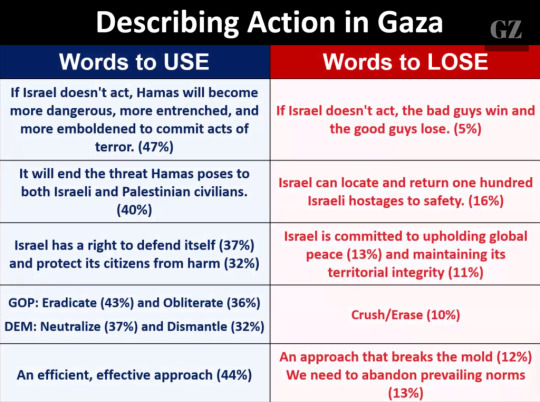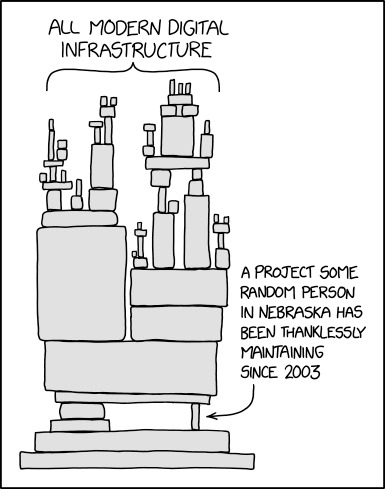#data reporting examples
Text
have my one final assignment for this term left and when i tell you i've never been more confused in my entire life......well
#neuro methods when i get you neuro methods#no because#they taught us how to use these tools which is all fine and dandy or whatever#but we had one lecture per method#and it was like.....basic stuff#and now we have to showcase our skill#and fine the actual task doesn't look as daunting now that they've given us more resources (like 2 weeks before its due mind you)#but the actual reporting part?#we have no proper examples#we were never really shown how to report such data only how to work with it#and also we apparently have to write a background section as well#background on what?????#this isn't an actual report - we have no like.....research to back it up#we're given all our data and the assignment focuses on reworking it and not actual results like in normal stats#ANYWAYS#sorry#had to let this out
8 notes
·
View notes
Text
I think one of the worst feelings is when you have a special interest in something you're decidedly not intelligent enough to fully understand, so you just sort of emptily rotate it in your head for a bit without actually GOING anywhere with it
#tw snakes. i go on a whole thing in the tags about snakes jghdkfj#this is about methodology and how studies can easily falsify data#like okay how did we get to this conclusion#how did we choose our study groups here? is data based on observation or self reporting?#can you really and truly account for every single variable???#did that 'health study' take baseline vitals before trying to prove a point???? looking at you. specific documentary.#OKAY RANDOM AND UNIMPORTANT EXAMPLE BUT ONE I HAVE THOUGHTS ON#I HAVE A RANT ABOUT THIS#OKAY#LOOK AT A 'TOP TEN MOST DEADLY SNAKES' LIST. RIGHT.#AND THEN ASK YOURSELF.#HOW ARE WE QUANTIFYING THE WORD DEADLY HERE#most deaths? sounds straightforward enough#but then you need to think about how a less potently venomous snake could be ranked as deadlier because it has a higher cohabitance with#humans. that can skew it. the snake per person ratio is really important when looking at and interpreting numbers#or are we weighing venomous as devoid of pure death counts and rather by potency of venom???#because then you need to consider that snake venoms function differently#some are hemotoxins. some are neurotoxins#can you test them based on the same parameters if they function on different mechanisms???#how can we account for dry bites in this?#IT GETS SO MUCH MORE INTERESTING IF YOU ZOOM OUT TO INCLUDE SNAKE INDUCED INJURIES#because some people are going to have aprticularly bad reactions to venom#and you need to account for preexisting conditions in the people being bitten#OOOOOOH AND YOU NEED TO CONSIDER MEDICAL ACCESS IN THE SNAKE'S RANGE#MORE PEOPLE WILL DIE OF SNAKEBITES IN IMPOVERISHED COMMUNITIES WHICH CAN SKEW RESULTS!!!!#oughhhhh there's so many variables and questions AND THESE LISTS NEVER TELL ME HOW THEY GOT THEIR CONCLUSIONS#TELL! ME! HOW! WE! GOT! HERE! AND! WHAT! WE! DID! TO! ENSURE! AN! ACCURATE! CONCLUSION!
11 notes
·
View notes
Text
Holy shit holy shit holy Schist!!!!!
A hydrothermal explosion happened Yellowstone!! And I’m alive to see it! I wish I was there.
From USGS Facebook:
A small hydrothermal explosion occurred in Yellowstone National Park today (July 23, 2024) around 10:00 AM MST in the Biscuit Basin thermal area, about 2.1 miles (3.5 km) northwest of Old Faithful. Numerous videos of the event were recorded by visitors. The boardwalk was damaged, but there were no reports of injury. The explosion appears to have originated near Black Diamond Pool.
Biscuit Basin, including the parking lot and boardwalks, are temporary closed for visitor safety. The Grand Loop road remains open. Yellowstone National Park geologists are investigating the event.
Hydrothermal explosions occur when water suddenly flashes to steam underground, and they are relatively common in Yellowstone. For example, Porkchop Geyser, in Norris Geyser Basin, experienced an explosion in 1989, and a small event in Norris Geyser Basin was recorded by monitoring equipment on April 15, 2024. An explosion similar to that of today also occurred in Biscuit Basin on May 17, 2009.
More information about hydrothermal explosions is available at https://www.usgs.gov/observatories/yvo/news/hydrothermal-explosions-yellowstone-national-park.
Monitoring data show no changes in the Yellowstone region. Today’s explosion does not reflect activity within volcanic system, which remains at normal background levels of activity. Hydrothermal explosions like that of today are not a sign of impending volcanic eruptions, and they are not caused by magma rising towards the surface.
Additional information will be provided as it becomes available.
The Yellowstone Volcano Observatory (YVO) provides long-term monitoring of volcanic and earthquake activity in the Yellowstone National Park region. Yellowstone is the site of the largest and most diverse collection of natural thermal features in the world and the first National Park. YVO is one of the five USGS Volcano Observatories that monitor volcanoes within the United States for science and public safety.
YVO Member agencies: USGS, Yellowstone National Park, University of Utah, University of Wyoming, Montana State University, UNAVCO, Inc., Wyoming State Geological Survey, Montana Bureau of Mines and Geology, Idaho Geological Survey
Image courtesy of Vlada March.
3K notes
·
View notes
Text
The Grayzone has obtained slides from a confidential Israel lobby presentation based on data from Republican pollster Frank Luntz. They contain talking points for politicians and public figures seeking to justify Israel’s assault on the Gaza Strip.
Two prominent pro-Israel lobby groups are holding private briefings in New York City to coach elected officials and well-known figures on how to influence public opinion in favor of the Israeli military’s rampage in Gaza, The Grayzone can reveal. These PR sessions, convened by the UJA-Federation and Jewish Community Relations Council, rely on data collected by Frank Luntz, a veteran Republican pollster and pundit.
[...] The Luntz-tested presentations on the war in Gaza urge politicians to avoid trumpeting America’s supposedly shared democratic values with Israel, and focus instead on deploying “The Language of War with Hamas.” According to this framing, they must deploy incendiary language painting Hamas as a “brutal and savage…organization of hate” which has “raped women,” while insisting Israel is engaged in “a war for humanity.”
[...] Luntz’s Gaza war presentation puts his poll-tested tactics back in the Israel lobby’s hands, urging pro-Israel public figures to stay on the attack with incendiary language and shocking allegations against their enemies.
In one focus group, Luntz asked participants to state which alleged act by Hamas on October 7 “bothers you more.” After being presented with a laundry list of alleged atrocities, a majority declared that they were most upset by the claim that Hamas “raped civilians” – 19 percent more than those who expressed outrage that Hamas supposedly “exterminated civilians.”
Data like this apparently influenced the Israeli government to launch an obsessive but still unsuccessful campaign to prove that Hamas carried out sexual assault on a systematic basis on October 7. Initiated at Israel’s United Nations mission in December 2023 with speeches by neoliberal tech oligarch Sheryl Sandberg and former US Secretary of State Hillary Clinton, a recipient of hundreds of thousands of dollars in donations and speaking fees from Israel lobby organizations, Tel Aviv’s propaganda blitz has yet to produce a single self-identified victim of sexual assault by Hamas. A March 5 report by UN Special Representative on Sexual Violence Pramila Patten did not contain one direct testimony of sexual assault on October 7. What’s more, Patten’s team said they found “no digital evidence specifically depicting acts of sexual violence.”
They also advice to use different language for Democrat and Republican voters, which inadvertently provides one of the most succinct explanation of the difference between the two genocidal parties that I've ever come across:
To make their arguments stick, Luntz recommends pro-Israel forces avoid the exterminationist language favored by Israeli officials who have called, for example, to “erase” the population of Gaza, and to instead advocate for “an efficient, effective approach” to eliminating Hamas.
At the same time, veteran pollster acknowledges that Republican voters prefer phrases which imply maximalist violence, like “eradicate” and “obliterate,” while sanitized terms like “neutralize” appeal more to Democrats. Republican presidential candidates Nikki Haley and Donald Trump have showcased similar focus-grouped rhetoric with their calls to “finish them” and “finish the problem” in Gaza.
One of the slides, illustrating what language to use:

There are several more slides in the article. I recommend reading the whole thing, start to finish. One more thing I'd like to highlight though:

Luntz acknowledges Israel’s mounting PR problems in a slide identifying the most powerful tactics employed by Palestine solidarity activists. “Israelis attacking Israel is the second most potent weapon against Israel,” the visual display reads beside a photo of a protest by Jewish Voices for Peace, a US-based Jewish organization dedicated to ending Israel’s occupation of Palestine.
“The most potent” tactic in mobilizing opposition to Israel’s assault on Gaza, according to Luntz, “is the visual destruction of Gaza and the human toll.” The slide inadvertently acknowledges the cruelty of Israel’s bombardment of Gaza, displaying a bombed out apartment building with clearly anguished women and children fleeing in the foreground.
But Luntz assures his audience, “It ‘looks like a genocide’ even though the damage has nothing to do with the definition.”
According to this logic, the American public can become more tolerant of copiously documented crimes against humanity if they are simply told not to believe their lying eyes.
. . . full article on GZ (6 Mar 2024)
5K notes
·
View notes
Text
Masterpost: Reasons I firmly believe we will beat climate change
Posts are in reverse chronological order (by post date, not article date), mostly taken from my "climate change tag," which I went through all the way back to the literal beginning of my blog. Will update periodically.
Especially big deal articles/posts are in bold.
Big picture:
Mature trees offer hope in world of rising emissions (x)
Spying from space: How satellites can help identify and rein in a potent climate pollutant (x)
Good news: Tiny urban green spaces can cool cities and save lives (x)
Conservation and economic development go hand in hand, more often than expected (x)
The exponential growth of solar power will change the world (x)
Sun Machines: Solar, an energy that gets cheaper and cheaper, is going to be huge (x)
Wealthy nations finally deliver promised climate aid, as calls for more equitable funding for poor countries grow (x)
For Earth Day 2024, experts are spreading optimism – not doom. Here's why. (x)
Opinion: I’m a Climate Scientist. I’m Not Screaming Into the Void Anymore. (x)
The World’s Forests Are Doing Much Better Than We Think (x)
‘Staggering’ green growth gives hope for 1.5C, says global energy chief (x)
Beyond Catastrophe: A New Climate Reality Is Coming Into View (x)
Young Forests Capture Carbon Quicker than Previously Thought (x)
Yes, climate change can be beaten by 2050. Here's how. (x)
Soil improvements could keep planet within 1.5C heating target, research shows (x)
The global treaty to save the ozone layer has also slowed Arctic ice melt (x)
The doomers are wrong about humanity’s future — and its past (x)
Scientists Find Methane is Actually Offsetting 30% of its Own Heating Effect on Planet (x)
Are debt-for-climate swaps finally taking off? (x)
High seas treaty: historic deal to protect international waters finally reached at UN (x)
How Could Positive ‘Tipping Points’ Accelerate Climate Action? (x)
Specific examples:
Environmental Campaigners Celebrate As Labour Ends Tory Ban On New Onshore Wind Projects (x)
Private firms are driving a revolution in solar power in Africa (x)
How the small Pacific island nation of Vanuatu drastically cut plastic pollution (x)
Rewilding sites have seen 400% increase in jobs since 2008, research finds [Scotland] (x)
The American Climate Corps take flight, with most jobs based in the West (x)
Waste Heat Generated from Electronics to Warm Finnish City in Winter Thanks to Groundbreaking Thermal Energy Project (x)
Climate protection is now a human right — and lawsuits will follow [European Union] (x)
A new EU ecocide law ‘marks the end of impunity for environmental criminals’ (x)
Solar hits a renewable energy milestone not seen since WWII [United States] (x)
These are the climate grannies. They’ll do whatever it takes to protect their grandchildren. [United States and Native American Nations] (x)
Century of Tree Planting Stalls the Warming Effects in the Eastern United States, Says Study (x)
Chart: Wind and solar are closing in on fossil fuels in the EU (x)
UK use of gas and coal for electricity at lowest since 1957, figures show (x)
Countries That Generate 100% Renewable Energy Electricity (x)
Indigenous advocacy leads to largest dam removal project in US history [United States and Native American Nations] (x)
India’s clean energy transition is rapidly underway, benefiting the entire world (x)
China is set to shatter its wind and solar target five years early, new report finds (x)
‘Game changing’: spate of US lawsuits calls big oil to account for climate crisis (x)
Largest-ever data set collection shows how coral reefs can survive climate change (x)
The Biggest Climate Bill of Your Life - But What Does It DO? [United States] (x)
Good Climate News: Headline Roundup April 1st through April 15th, 2023 (x)
How agroforestry can restore degraded lands and provide income in the Amazon (x) [Brazil]
Loss of Climate-Crucial Mangrove Forests Has Slowed to Near-Negligable Amount Worldwide, Report Hails (x)
Agroecology schools help communities restore degraded land in Guatemala (x)
Climate adaptation:
Solar-powered generators pull clean drinking water 'from thin air,' aiding communities in need: 'It transforms lives' (x)
‘Sponge’ Cities Combat Urban Flooding by Letting Nature Do the Work [China] (x)
Indian Engineers Tackle Water Shortages with Star Wars Tech in Kerala (x)
A green roof or rooftop solar? You can combine them in a biosolar roof — boosting both biodiversity and power output (x)
Global death tolls from natural disasters have actually plummeted over the last century (x)
Los Angeles Just Proved How Spongy a City Can Be (x)
This city turns sewage into drinking water in 24 hours. The concept is catching on [Namibia] (x)
Plants teach their offspring how to adapt to climate change, scientists find (x)
Resurrecting Climate-Resilient Rice in India (x)
#climate change#climate crisis#climate action#climate emergency#climate anxiety#climate solutions#fossil fuels#pollution#carbon emissions#solar power#wind power#trees#forests#tree planting#biodiversity#natural disasters#renewables#renewable electricity#united states#china#india#indigenous nations#european union#plant biology#brazil#uk#vanuatu#scotland#england#methane
562 notes
·
View notes
Note
you’re still ignoring WHY the rates for men are so high, because women get underreported and don’t get taken seriously at all when they commit crimes. Women abuse children more and initiate 70% of domestic violence, yet men are still portrayed as the villains. You should read the comments or some of the reblogs under that post. Full of people who have been abused by women and have been safer when around only men,and never been taken seriously. You say it’s a strawman fallacy but no it’s not, radfems say this shit all the timesee. and are very gender essentialist themselves. Maybe you’re not saying it but a lot of popular radfems are, to mostly agreement from other radfems,so you can’t really blame people for seeing that and understanding it to be a popular TERF take.
Hi -
So, I'm going to answer this ask and the one that includes the bustle link that I expect was also sent by you? However, I'm not going to continue putting in this degree of effort (i.e., reading and researching the information you send) unless you start matching that effort. It will be difficult for you to do so in an ask (although I suppose you could try), so I suggest you reblog this post to further discuss.
So, on to the response:
---
No, there is not a significant reporting gap (at least, not one caused by sex).
You said "women get underreported and don’t get taken seriously at all when they commit crimes", but there is no evidence that is the case. Let's take the crime data from two sources: the criminal victimization survey by the BJS [1] and the FBI crime data explorer [2]. These two sources are helpful for this discussion because the BJS attempts to determine total offenses including those not reported, while the FBI only looks at reported offenses.
For 2022 (rounding numbers) and looking at violent offenses (excluding homicide as the BJS report is interview based):
Male violent crime: 4,750,000 estimated by the BJS and 1,990,000 reported by the FBI for an overall 42% reporting rate
Female violent crime: 1,220,000 estimated by the BJS and 777,000 reported by the FBI for an overall 64% reporting rate
These numbers would suggest that more female offenders than male offenders are reported (i.e., a greater percent of female offenders, even though in absolute terms there are far fewer female offenders). However, there are some caveats to this data that makes me reluctant to state this conclusion:
The crime definitions between the BJS and FBI differ slightly. For example, I had to search through the "other crimes" for the FBI to find simple assault and several additional sexual assault categories to try and match the overall BJS "violent crime" statistic.
These stats are incident based not offender based. So, for example, if John commits 10 aggravated assaults and 5 of his victims report the assault to the police, 5 incidents are recorded in the system. Therefore, recidivism may or may not play a role in reporting rates.
I calculated the rate using the offender stats for individual offenders and "both male and female offender". Proportionally speaking a greater percent of female offenders are in the "both" category (23% vs 6%). Other statistics suggest more severe crimes are more likely to be reported to the police (e.g., 50% of aggravated assault is reported vs 37% of simple assault). If we make the assumption that violent crimes involving multiple offenders are more likely to be severe, then this could partially explain the disparity.
However, this point is essentially irrelevant, as the statistics previously discussed in the CDC report don't rely on reported crimes, they specifically interview representative samples in order to determine prevalence rates. (The difference between this data (and data in the BJS report) and the number of reported cases is how we know these crimes are under-reported.)
Just to drive the point home: the BJS study, which again, looks at both reported and unreported crime indicates:
Men take part in 84% of violent crimes and the only offender(s) in 79% of violent crimes (the stats for women are 21% and 17% respectively)
The offender-to-population ratio is 1.6 for men and 0.3 for women. That means the share of men in the "offender population" is 60% more than the share of men in the US population. The share of women offenders is 70% less than their share of the US population.
And before you send me another debunked myth: no men are not victimized more: the victim-to-offender population ratio for all violent crimes is 1.0 for both men and women.
I've also talked about how men don't under-report abuse (at least, not anymore than women do) in the past, so see this post for a couple more sources.
There's also no evidence that crimes committed by women get taken less seriously. However, it is true that when women do commit crimes, they tend to be less severe than the crimes committed by men (i.e., women commit more simple assault and aggravated assault). Given this, women's crimes may be taken "less seriously", but that's because the crimes are less serious, going by the accepted definitions of the crime. (And this is not my personal opinion! There is an actual "crime hierarchy" used in the American justice system that ranks crimes by degree of severity.)
In terms of legal consequences, women and men receive similar sentence lengths with one major caveat [3]. Caretakers of children, especially, young children, routinely received shorter sentences. Since women are more likely to be the primary caretaker of children, they'd be more likely to see this sentence reduction. However, this gap has been closing since the introduction of mandatory minimum sentencing. Some research suggests women may receive harsher sentences than men for "traditionally male crimes" [4].
Either way, crimes by women are clearly taken at least as "seriously" as crimes by men.
---
No women do not abuse children more.
You said "Women abuse children more", but this is an oft-repeated statement from terribly misinterpreted data.
The misconception comes from data from the child maltreatment report from the HHS [5]. This report looks at reports of child abuse and neglect. In it they found that 52% of victims had a female perpetrator and 47% had a male perpetrator. At first glance, this looks like women abuse more children (hence the wide-spread misinterpretation), however this neglects to take several things into consideration.
First, since about 51% of the population is female, even if we considered nothing else, these values would suggest parity in maltreatment (abuse + neglect) rates. Of course, even this interpretation is deeply flawed, but I thought it merited pointing out.
Second, and perhaps most important, these stats are not looking at incidence or even prevalence rates. This isn't a rate at all. For example, you may be tempted to interpret these as "52% of children in a women's care are abused" or "52% of women abuse children". These are, and I must stress this, completely incorrect interpretations. These stats say only that of child maltreatment (abuse+neglect) victims identified by CPS, 52% of them were maltreated by a women.
Next, these stats fail to take into account the fact that many more women are the primary caretaker of children. According to the American Time Use Survey (ATUS), mothers spend 80% more time caring for children than fathers. This disparity widens even further when you exclude the "entertainment" categories like playing or reading to children (130% increase, or more than double) [6]. This matters because it provides some insight into how rates of abuse would be different. You need to adjust for time spent with children to get a meaningful rate. Another way to look at this is that despite mothers spending almost twice the amount of time around children as fathers, they account for the same number of perpetrators. This alone should tell you that a child is more likely to be safe in the company of a randomly selected woman than a randomly selected man.
In case you still aren't convinced however, the report also clarifies that the perpetrator sex varied widely by maltreatment type. Women were the perpetrator in 58.5% of neglect cases (vs 41%) and 70.5% of medical neglect cases (vs 29%). But men were the perpetrator in 49.5% of physical abuse cases (vs 49%), 89% of sexual abuse cases (vs 8%), and 59% of emotional abuse cases (vs 41%). While no form of child maltreatment is ever acceptable, I hope I don't need to explain how abuse (which "requires an action") is different from neglect (which "occurs from an inaction") and requires different responses.
Speaking of neglect: there is much discourse on how much of the neglect (and medical neglect) registered by CPS is "true neglect" and how much is a result of poverty. This is particularly relevant considering single mothers are much more likely to live in poverty than married couples or single fathers. Examples of this may include: a mother doesn't have enough money to buy food and pay for rent so she and her child eat very little until her next paycheck, a single mother can't miss work without being fired so she sends her sick child to school, a single mother can't pay for child care so she has to choose between leaving her child home alone or having an unfit adult (her own abusive parent? an unsuitable boyfriend?) watch her child. In all of these situations, something absolutely needs to be done to help the child, but it likely isn't the same something as a child who's being beaten or sexually abused by his father.
Other notes on neglect: even the relatively higher proportion of female perpetrators for neglect and medical neglect in this sample are well below parity when adjusted for time spent with the child. It’s also likely that men’s rates of neglect are likely severely under-reported here. Why? Because a neglect case is rarely (if ever) opened for absentee ("deadbeat") dads; it's also unclear how many men with non-primary custody are listed as perpetrators of neglect. (I ask you: if mothers are considered neglectful for failing to intervene on behalf of their child in abusive/neglectful situations, why aren't fathers?)
Other studies on child abuse perpetration (sadly no national reports) show:
Evaluations of child fatalities in Missouri over a 8-year period showed men inflicted 71% of fatal injuries on young children [8]
Evaluations of fatal and nonfatal abusive head trauma over a 12-year period at the Children's Hospital of Denver found 69% of the perpetrators were male (including 74% of the perpetrators of fatal head traumas) [9]
Data from conviction rates and victimization surveys suggest that 4-5% of adult, child sex offenders (as in child sex offenders who are adults) are female, meaning that 95-96% are male [10]
Altogether, this indicates that men are more likely to abuse a child in their care than women. Unsurprisingly, it’s safer for children to be around women than around men.
---
No, women do not initiate more domestic violence/commit the same amount of abuse.
You said "women ... initiate 70% of domestic violence". It took me a while to find a source for this statistic, but I eventually found out it comes from a poorly done study that unfortunately finds company with a number of other poorly done studies touted by MRAs and anti-feminists.
Before we address that study specifically: a brief history of the nonsense plaguing domestic violence research.
To be clear, this is not a new discussion, we (the general we) have been having this same discussion about whether there's gender parity in domestic violence for, oh, 50 years or so. It is, possibly not entirely, but certainly mostly the result of the "Conflict Tactics Scale" (CTS). Intended for use in family violence research, it has several methodological flaws which make its results ... let's go with unreliable.
I really thought I'd discussed the CTS before now ... but can't find anything on my blog. But there is this post which is a nice pictograph about this next topic, which I will loop into our discussion of the CTS.
So ... why is the CTS so unreliable? Because "domestic violence" is not a homogeneous phenomenon. If I asked someone to picture an abusive relationship they are almost certainly going to imagine an abusive man controlling his partner through intimidation, likely restricting her behavior, and possibly hitting or otherwise physically harming her. This "typical" dynamic is what we think of when we hear "domestic abuse/violence". (I'd argue that it's what we should think of when discussing domestic violence, but I'm open to being convinced otherwise.)
Notably, what this doesn't include is the -- far more common -- case of situational violence. A "typical" example of situational violence is arguments that "gets out of hand" and end with one partner slapping/shoving/etc. the other (switching between perpetrator for different incidents) or two people who routinely get "nasty" (name calling, personal insults) to each other during arguments. There's no intimidation or controlling behavior and it doesn't escalate. It also is generally not associated with significant victim hardship (i.e., no/little increase in depression, anxiety, or PTSD; little fear or feeling unable to escape the relationship; no or few physical injuries; little or no economic hardship; etc.). It's also what's predominately being measured by the CTS.
This isn't to say that situational violence is "okay". It clearly isn't, no more than a bar fight or slapping a co-worker is okay. It is, however, far more comparable to these examples (bar fight, slapping a coworker, etc.) than it is to the standard conception of domestic violence (which itself is more comparable to being a prisoner of war [11]). Some people have tried to resolve this by renaming the standard conception to "intimate partner terrorism" or "domestic abuse with coercive control". I have ... mixed thoughts on this, so I'm going to leave it at this for now.
If you'd like to read more about this, Michael P. Johnson at PSU (who originally proposed this division back in the 1990s!) has written a book and also has numerous articles about the topic.
I have a lot of sources about the CTS/differences in violence perpetration rates, but this post is already very long and I plan to make a whole separate post about this at some point. So, I'm going to briefly summarize the points and give some references that would be particularly helpful.
So, the issues with CTS include:
Failure to include a full range of possible violent behaviors, including many that are almost always perpetrated by men, including: rape, murder, choking, and suffocation.
Failure to examine post-breakup/divorce time periods, despite post-separation being one of the most dangerous time periods for abused women (but, notably, not men).
Failure to examine context. This gets back at the paradigm I mentioned above: studies that do examine context have shown that the vast majority of coercive controlling violence (i.e., traditional abuse) is perpetrated by men and the vast majority of responsive violence (i.e., self-defense) is perpetrated by women.
Failure to examine the severity of the violence and/or violence impacts. Studies have also shown that women routinely receive the more severe injuries than men. That applies to both the injuries received from coercive controlling violence and from situational violence. Notably, men are rarely ever injured from responsive violence. Women also routinely report more severe psychological and social problems as a result of abuse.
Extremely poor phrasing of the questions. The CTS is unique in its false positive rate, as has been established by several other measures of violence. For example, simply adding the stem "Not including horseplay or joking around..." reduced the number of violent incidents reported and also showed higher rates of female victimization than male victimization.
Inconsistency with every other scale/measure used for determining prevalence rates of abuse! Hopefully it is obvious why this is an issue, but as an example: if I created a new measure for "depressive symptoms" and I found that it correlated very poorly with every other accepted measure of depressive symptoms then my new measure would be considered to have very poor "convergent validity". In non-politicized situations, my measure would likely never make it to the publishing stage, and would certainly fall out of use once this poor validity demonstrated by another study. Unfortunately, science is not immune to politics any more than the people conducting it are, as we can see with the survival of the CTS.
I gathered this information from a bunch of sources, but I've selected a few reviews (i.e., papers that "review" or condense many other papers into one) that would be helpful to you [12-16]. I recommend [12] in particular, although [13] touches on much of the same information and is much shorter. Ultimately, the CTS can, at most, be considered a measure of situational violence (and it's not even very good at that!).
---
So, finally, why is the 70% study [17] particularly bad?
All of the above problems with CTS apply, but in addition to all of that, they didn't just use the already flawed measure as it was ... no they, narrowed it down into 6 total questions. In total it asked about the respondent's perpetration of victimization of the following forms of violence: threatening with violence, pushing/shoving, throwing something, slapped, hit, kicked. They then "assessed" severity by asking a single question about injuries ("How often has partner had an injury, such as a sprain, bruise, or cut because of a fight with you?" and the corresponding victimization version.)
So, let's see ... failure to include predominately male forms of violence? Check. Further exclusion of even the existing items on the CTS that do examine this? Check! Failure to examine time past the relationship? Check. Failure to examine context? Check! Failure to examine severity of violence? Check. (Asking about a sprain or a bruise but not hospitalizations? broken bones? concussions?) Inconsistency with all other measures? Definitely!
Other problems with the study: they asked individuals to rate their perpetration and victimization, they did not examine their partners responses to such questions. This is a problem for a study like this, given that men tend to over-estimate their partners violence towards them and under-estimate their own violence towards their partner, and women do the opposite over-estimating their own violence and under-estimating their partners [12]. A note that a related problem has also shown up for the original CTS (i.e., if you asked both partners to complete the scale, their responses may agree on the "explaining a disagreement" item pair, but there was little if any agreement on the severe items like the "beating up" item pair).
To make a bad problem even worse: they condensed their multi-item (8-point) scales into binary (yes/no) categories and 3-item (low/medium/high) categories. This reduction in variance likely created artificially high rates for women and artificially low rates for men.
Hilariously (infuriatingly), they make it all the way through this data and then acknowledge that their study may not actually have examined domestic abuse at all! Instead it describes "common couple violence or situational violence", which, again, goes back to what the paradigm I introduced earlier. Of course, they don't revise their title or abstract to be less misleading ... that wouldn't be sensational enough.
Also, just to point this out: even this poorly designed, misleading study still showed "men were more likely to inflict an injury on a partner than ... women". So ... there you go. Even tipping the scales/design as far in favor of a "gender symmetry" result as they can possibly go, women still end up injured more than men.
---
So, for the rest of your ask:
"yet men are still portrayed as the villains"
well when 1 in 3 men around the world openly admit to abusing women, and they are the perpetrator of 90+% of homicides, and 10-67% of men openly admit to believing non-defensive physical and sexual violence against women is at least sometimes okay it's pretty easy to see why women can see them as the villain/enemy.
"You should read the comments or some of the reblogs under that post. Full of people who have been abused by women and have been safer when around only men,and never been taken seriously."
This is one of those cases where critical thinking skills are pretty important! Let me start you off:
Do I think that a social media post will garner a representative sample from which to draw conclusions? Or is more likely that people who agree with the post will comment on and re-blog it, spreading it more people who are more likely to agree with it?
Can I see the re-blog I'm making comments about (i.e., evidence-based-activism's re-blog?). If not, (hint: it's not in the re-blog viewer :)) is it possible that there are other hidden replies that are disagreeing with this post?
Maybe most importantly: do I need female-on-male or female-on-female violence to be as common as male-on-female and male-on-male violence in order to show compassion to those who do experience it? (Hint: you shouldn't!! Something doesn't need to be common to deserve sympathy and rare =/= excusable.)
In addition, this is touching on a pretty common issue with discourse these days -- the prioritization of "feeling" over "being". Someone (male or female) may feel safer around men, but statistically speaking they are safer around women. It's reasonable to respond to and accommodate people's feelings on an individual basis, it's not reasonable to base an ideology or policy around them.
"You say it’s a strawman fallacy but no it’s not, radfems say this shit all the timesee. ... Maybe you’re not saying it but a lot of popular radfems are, to mostly agreement from other radfems,so you can’t really blame people for seeing that and understanding it to be a popular TERF take."
Similar to the last point ... views on social media are not representative of a population. Views that you, specifically, are seeing are not representative! If they were, then "well, I see more posts preemptively criticizing people for not including men than I see posts excluding men" (which is true, almost every post I read now-a-days includes caveats like "but men are abused too!! and women can be abusers!!") would have been a valid counter-argument to your ask. But see, I know that my experience on social media is not universal, and I should hope you can acknowledge the same of your own!
Also ... to be fair to all these unnamed "radfems", I'm guessing that you would consider my posts (like this response) to be an example of someone "saying this", which is very much not the case. I am acknowledging social trends and making reasonable generalizations to allow for communication about a complex topic (you know, the way people do for any and every topic ever), but I'm not claiming that no women is ever abusive or that no man has ever been abused. I'm guessing that these other posts are pretty similar (if less verbose).
side note, you also said: "radfems ... are very gender essentialist themselves".
Either you don't know what "gender essentialist" means or the people you are talking to/about are not radfems. I acknowledge that there are a number of people going around and saying they're radfems, but the nice thing about a political group like this is they have (at least some) defined beliefs.
So, for example, if someone went around saying they are a communist, but then when asked to describe their desired economic system, describes an economy based around the free market and decentralized production ... then they aren't a communist no matter what they call themselves. A command economy is a central tenant to communism, so much so that a desire to implement one/have one is intrinsic to being a communist.
In the same way, if someone is calling themselves a radfem, but supports the preservation of gender/gender roles or believes that femininity/masculinity is biologically innate ... then they aren't a radfem.
---
TL;DR:
Violent crimes for women and men are reported at similar rates.
Women and men are punished similarly for violent crimes (i.e., people do take crimes by women seriously).
Children are safer in the company of women than men. There is insufficient research to accurately describe perpetrator demographics of "minor" child abuse/neglect, but there is significant research indicating that men are the perpetrator of the the vast majority of severe injuries, fatal injuries, and sexual abuse.
Men commit the vast majority controlling domestic violence (the type of violence people think of when thinking about domestic violence); women's violence is predominately responsive. Women are also the recipients of the vast majority of injuries (minor and severe) and are the victim of almost all fatalities.
Social media posts are not representative studies.
Critical thinking skills are important!
And, everyone -- regardless of sex or any other demographic characteristic -- deserves compassion when harmed. It is still appropriate talk about trends and create policies that assist the majority of those harmed.
A reminder that I will expect a reasonable degree of engagement with this information if you plan to engage in further discussion! I'll answer the bustle link ask, but after that I'll simply delete asks that don't make a genuine attempt to think critically about this information. (Clarifying questions are okay to ask though :)).
---
References below the cut:
Criminal Victimization, 2022 | Bureau of Justice Statistics. https://bjs.ojp.gov/library/publications/criminal-victimization-2022.
“National Incident-Based Reporting System (NIBRS) Details Reported in the United States .” Federal Bureau of Investigation Crime Data Explorer, https://cde.ucr.cjis.gov/LATEST/webapp/#/pages/explorer/crime/crime-trend.
Myrna S. Raeder Gender and Sentencing: Single Moms, Battered Women, and Other Sex-Based Anomalies in the Gender-Free World of the Federal Sentencing Guidelines, 20 Pepp. L. Rev. Iss. 3 (1993) Available at: https://digitalcommons.pepperdine.edu/plr/vol20/iss3/1
https://web.archive.org/web/20240406064949/https://www.theguardian.com/news/datablog/2019/jan/12/intimate-partner-violence-gender-gap-cyntoia-brown
Child Maltreatment 2022. https://www.acf.hhs.gov/cb/report/child-maltreatment-2022.
“Average Hours per Day Parents Spent Caring for and Helping Household Children as Their Main Activity.” Bureau of Labor Statistics, https://www.bls.gov/charts/american-time-use/activity-by-parent.htm.
Shrider, Emily A., Melissa Kollar, Frances Chen, and Jessica Semega, U.S. Census Bureau, Current Population Reports, P60-273, Income and Poverty in the United States: 2020, U.S. Government Publishing Office, Washington, DC, September 2021.
Schnitzer PG, Ewigman BG. Child deaths resulting from inflicted injuries: household risk factors and perpetrator characteristics. Pediatrics. 2005 Nov;116(5):e687-93. doi: 10.1542/peds.2005-0296. PMID: 16263983; PMCID: PMC1360186.
Starling SP, Holden JR, Jenny C. Abusive head trauma: the relationship of perpetrators to their victims. Pediatrics. 1995 Feb;95(2):259-62. PMID: 7838645.
McCartan, K. (Ed.). (2014). Responding to Sexual Offending. Palgrave Macmillan UK. https://doi.org/10.1057/9781137358134
Comparison Between Strategies Used on Prisoners of War and Battered Wives | Office of Justice Programs. https://www.ojp.gov/ncjrs/virtual-library/abstracts/comparison-between-strategies-used-prisoners-war-and-battered-wives.
Michael S. Kimmel. (2001). Male Victims of Domestic Violence: A Substantive and Methodological Research Review. The Equality Committee of the Department of Education and Science. https://vawnet.org/material/male-victims-domestic-violence-substantive-and-methodological-research-review
Flood, M. (1999, July 10). Claims About Husband Battering [Contribution to Newspaper, Magazine or Website]. Domestic Violence and Incest Resource Centre Newsletter; Domestic Violence and Incest Resource Centre. https://eprints.qut.edu.au/215068/
Walter DeKeseredy & Martin Schwartz. (1998). Measuring the Extent of Woman Abuse in Intimate Heterosexual Relationships: A Critique of the Conflict Tactics Scales. VAWnet.Org. https://vawnet.org/material/measuring-extent-woman-abuse-intimate-heterosexual-relationships-critique-conflict-tactics
Shamita Das Dasgupta. (2001). Towards an Understanding of Women’s Use of Non-Lethal Violence in Intimate Heterosexual Relationships. VAWnet.Org. https://vawnet.org/material/towards-understanding-womens-use-non-lethal-violence-intimate-heterosexual-relationships
Shamita Das Dasgupta. (2001). Towards an Understanding of Women’s Use of Non-Lethal Violence in Intimate Heterosexual Relationships. VAWnet.Org. https://vawnet.org/material/towards-understanding-womens-use-non-lethal-violence-intimate-heterosexual-relationships
Whitaker, Daniel J., et al. “Differences in Frequency of Violence and Reported Injury Between Relationships With Reciprocal and Nonreciprocal Intimate Partner Violence.” American Journal of Public Health, vol. 97, no. 5, May 2007, pp. 941–47. PubMed Central, https://doi.org/10.2105/AJPH.2005.079020.
833 notes
·
View notes
Text
Some hints about evaluating scientific studies
Firstly, understand that something being published in a scientific journal (or an academic journal for the social sciences) does not automatically make it true. Publishers profit from publishing novel, eye-catching, surprising research, which means they are more likely to publish positive results than ones that didn't find a connection between given variables. This means that scientists' careers benefit when they get positive results. Certain institutions also benefit from certain findings above others (a committee for research on "obesity" that is funded by a government organisation tasked with ending it, for example, is likely to try to stretch the evidence to find a link between body weight and poor health outcomes). So how do people evaluate scientific studies, especially without being scientists themselves?
Literature reviews
Literature reviews, which aim to assemble and summarise most of the available or influential papers on a given issue, can be a good place to start when trying to research that issue. Typically, scientific studies shouldn't only be evaluated on a case-by-case basis (since even well-designed studies can be contradicted by other, equally well-designed studies), but a full survey of the different results people have gotten should be taken.
Background information and conflicts of interest
Try to find out who funded a given study. Who published the study? What do these people stand to gain from the results of the study being accepted? (For example: you might pay special attention to the experimental design on a study on whether a certain essential oil helps to reverse hair loss that was carried out by a company that sells that oil.)
In theory, many journals call for study authors to declare any conflicts of interest they may have in a special section of the paper. This section should also list funding sources. You might also look up the authors on linkedin or something to find where they're employed; also look into whether another conglomerate owns that company, &c.
Experimental design
If the study involves a survey, have the authors of the paper provided the questions that people were asked, so that you can evaluate them for potential ambiguity or confusing wording? Not being transparent about the exact wording of questions is a sign that a study isn't trustworthy.
What's the sample size? Is it large enough for the claim the study is making to be reasonable? (More on this in the next section.)
Does the experimental design make sense with what the researchers wanted to study? Are the claims that they make in the conclusion section something that could reasonably be proven or suggested by the experiment that they performed?
Does the experimental design "bake in" an assumption of the truth of its hypothesis? (For example, measuring skeletons to argue that they fall into statistically significant size groupings by sex, using skeletons that you sorted into "male" and "female" groups based on their size, is clearly circular).
How was data collected? People might change their answers to a survey, for example, if they have to speak to a person to give them, rather than writing them down anonymously. Self-reported information (such as a survey aiming to figure out average height or average penis size) is also subject to bias. A good study should be transparent about how the authors collected their data, and be clear about how this could have affected their results.
Also regarding surveys: do the categories that the authors have divided respondents into make sense? Are these categories really mutually exclusive? If respondents were asked to sort themselves into categories (e.g., to select their own race or ethnicity), is there any guarantee that they all interpreted the question / the boundaries of these categories the same way? How would this affect the results?
Interpretation of results
Could anything other than the conclusion that the authors came to explain the results of their experiment? For example, a study finding a correlation between two variables and assuming that this means one variable causes the other ("being in a lot of stress causes short stature" or vise versa) could be missing a secret third thing which is in fact causing both of those things (e.g., poverty). Check to make sure that the authors considered other explanations for their findings and ruled them out (for example, by controlling for other variables such as socioeconomic status).
Are the results of the study generalisable to the population that the authors claim they're generalisable to? For example, the results may not be true for the entire population if only cisgender men between the ages of 30 and 40 were tested. Sampling biases can also affect generalisability—if I surveyed my college to try to find out the percentage of women in the total population, you might ask "but is your college sure to have the same percentage of women as the Earth does?"
Statistics
Are the results statistically significant, or are they within expected margins of error?
Many studies provide a p-value (a number between 0 and 1) for their results. In theory, a p-value represents the chance that the study's results could have been achieved by random chance. If you flip a coin ten times (so, your sample size is 10), it's not very odd to get heads six times and tails four times, and you wouldn't accept that as proof that the coin lands on heads more often than tails. The p-value for that result would be high (that is, there's a high chance that the coin appears unfair only because of random chance). On the other hand, if you flip a coin 100,000 times and it lands on heads 60,000 of those times, that's much better evidence that the coin is not a fair one. The p-value would be much lower. Typically, a p-value lower than 0.05 is considered statistically significant.
In practice, there's more than one way to calculate p-values, and so studies sometimes claim p-values that seem absurdly low. A low p-value is not proof of a claim in and of itself. Check to make sure that the authors of the paper also provide the raw data, and not just the p-values; this indicates a concern with other people being able to independently evaluate their results, rather than just trying to get The Best Numbers.
Citations
If the study cites something that seems foundational to their claims or interpretation, try tracing it back to the paper that was cited. Does the source actually claim what the authors of the first study said it did? Does the source provide proof or support for the claim, or does it seem flimsy, like a "common-sense" assumption?
Replication
Check the studies that cite the one you're currently looking at. Has anyone else tried to replicate the study? What were their results?
What if I really, really don't want to read scientific studies?
That's fine. Not everyone is concerned enough with specific scientific questions for regularly reading scientific papers to be reasonable for them. Just keep in mind that not everything in a scientific journal is necessarily true; that profit motives and personal and institutional bias impact results (e.g. when some studies revealed a lack of poor health outcomes for "obesity," and many scientists responded by calling it a "paradox" that needed to be "solved"); and that pop science and journalistic reporting on science are subject to distortions from the same sources.
Try finding commentators on scientific matters whose output you like, and evaluate their writing the same way you would evaluate any other critical writing.
#feel free to add on!#this doesn’t really incorporate the extent of my cynicism wrt to scientific establishment but. lol#reading comprehension#critical thinking
2K notes
·
View notes
Text
Tech monopolists use their market power to invade your privacy

On SEPTEMBER 24th, I'll be speaking IN PERSON at the BOSTON PUBLIC LIBRARY!

It's easy to greet the FTC's new report on social media privacy, which concludes that tech giants have terrible privacy practices with a resounding "duh," but that would be a grave mistake.
Much to the disappointment of autocrats and would-be autocrats, administrative agencies like the FTC can't just make rules up. In order to enact policies, regulators have to do their homework: for example, they can do "market studies," which go beyond anything you'd get out of an MBA or Master of Public Policy program, thanks to the agency's legal authority to force companies to reveal their confidential business information.
Market studies are fabulous in their own right. The UK Competition and Markets Authority has a fantastic research group called the Digital Markets Unit that has published some of the most fascinating deep dives into how parts of the tech industry actually function, 400+ page bangers that pierce the Shield of Boringness that tech firms use to hide their operations. I recommend their ad-tech study:
https://www.gov.uk/cma-cases/online-platforms-and-digital-advertising-market-study
In and of themselves, good market studies are powerful things. They expose workings. They inform debate. When they're undertaken by wealthy, powerful countries, they provide enforcement roadmaps for smaller, poorer nations who are being tormented in the same way, by the same companies, that the regulator studied.
But market studies are really just curtain-raisers. After a regulator establishes the facts about a market, they can intervene. They can propose new regulations, and they can impose "conduct remedies" (punishments that restrict corporate behavior) on companies that are cheating.
Now, the stolen, corrupt, illegitimate, extremist, bullshit Supreme Court just made regulation a lot harder. In a case called Loper Bright, SCOTUS killed the longstanding principle of "Chevron deference," which basically meant that when an agency said it had built a factual case to support a regulation, courts should assume they're not lying:
https://jacobin.com/2024/07/scotus-decisions-chevron-immunity-loper
The death of Chevron Deference means that many important regulations – past, present and future – are going to get dragged in front of a judge, most likely one of those Texas MAGA mouth-breathers in the Fifth Circuit, to be neutered or killed. But even so, regulators still have options – they can still impose conduct remedies, which are unaffected by the sabotage of Chevron Deference.
Pre-Loper, post-Loper, and today, the careful, thorough investigation of the facts of how markets operate is the prelude to doing things about how those markets operate. Facts matter. They matter even if there's a change in government, because once the facts are in the public domain, other governments can use them as the basis for action.
Which is why, when the FTC uses its powers to compel disclosures from the largest tech companies in the world, and then assesses those disclosures and concludes that these companies engage in "vast surveillance," in ways that the users don't realize and that these companies "fail to adequately protect users, that matters.
What's more, the Commission concludes that "data abuses can fuel market dominance, and market dominance can, in turn, further enable data abuses and practices that harm consumers." In other words: tech monopolists spy on us in order to achieve and maintain their monopolies, and then they spy on us some more, and that hurts us.
So if you're wondering what kind of action this report is teeing up, I think we can safely say that the FTC believes that there's evidence that the unregulated, rampant practices of the commercial surveillance industry are illegal. First, because commercial surveillance harms us as "consumers." "Consumer welfare" is the one rubric for enforcement that the right-wing economists who hijacked antitrust law in the Reagan era left intact, and here we have the Commission giving us evidence that surveillance hurts us, and that it comes about as a result of monopoly, and that the more companies spy, the stronger their monopolies become.
But the Commission also tees up another kind of enforcement: Section 5, the long (long!) neglected power of the agency to punish companies for "unfair and deceptive methods of competition," a very broad power indeed:
https://pluralistic.net/2023/01/10/the-courage-to-govern/#whos-in-charge
In the study, the Commission shows – pretty convincingly! – that the commercial surveillance sector routinely tricks people who have no idea how their data is being used. Most people don't understand, for example, that the platforms use all kinds of inducements to get web publishers to embed tracking pixels, fonts, analytics beacons, etc that send user-data back to the Big Tech databases, where it's merged with data from your direct interactions with the company. Likewise, most people don't understand the shadowy data-broker industry, which sells Big Tech gigantic amounts of data harvested by your credit card company, by Bluetooth and wifi monitoring devices on streets and in stores, and by your car. Data-brokers buy this data from anyone who claims to have it, including people who are probably lying, like Nissan, who claims that it has records of the smells inside drivers' cars, as well as those drivers' sex-lives:
https://nypost.com/2023/09/06/nissan-kia-collect-data-about-drivers-sexual-activity/
Or Cox Communications, which claims that it is secretly recording and transcribing the conversations we have in range of the mics on our speakers, phones, and other IoT devices:
https://www.404media.co/heres-the-pitch-deck-for-active-listening-ad-targeting/
(If there's a kernel of truth to Cox's bullshit, my guess it's that they've convinced some of the sleazier "smart TV" companies to secretly turn on their mics, then inflated this into a marketdroid's wet-dream of "we have logged every word uttered by Americans and can use it to target ads.)
Notwithstanding the rampant fraud inside the data brokerage industry, there's no question that some of the data they offer for sale is real, that it's intimate and sensitive, and that the people it's harvested from never consented to its collection. How do you opt out of public facial recognition cameras? "Just don't have a face" isn't a realistic opt-out policy.
And if the public is being deceived about the collection of this data, they're even more in the dark about the way it's used – merged with on-platform usage data and data from apps and the web, then analyzed for the purposes of drawing "inferences" about you and your traits.
What's more, the companies have chaotic, bullshit internal processes for handling your data, which also rise to the level of "deceptive and unfair" conduct. For example, if you send these companies a deletion request for your data, they'll tell you they deleted the data, but actually, they keep it, after "de-identifying" it.
De-identification is a highly theoretical way of sanitizing data by removing the "personally identifiers" from it. In practice, most de-identified data can be quickly re-identified, and nearly all de-identified data can eventually be re-identified:
https://pluralistic.net/2024/03/08/the-fire-of-orodruin/#are-we-the-baddies
Breaches, re-identification, and weaponization are extraordinarily hard to prevent. In general, we should operate on the assumption that any data that's collected will probably leak, and any data that's retained will almost certainly leak someday. To have even a hope of preventing this, companies have to treat data with enormous care, maintaining detailed logs and conducting regular audits. But the Commission found that the biggest tech companies are extraordinarily sloppy, to the point where "they often could not even identify all the data points they collected or all of the third parties they shared that data with."
This has serious implications for consumer privacy, obviously, but there's also a big national security dimension. Given the recent panic at the prospect that the Chinese government is using Tiktok to spy on Americans, it's pretty amazing that American commercial surveillance has escaped serious Congressional scrutiny.
After all, it would be a simple matter to use the tech platforms targeting systems to identify and push ads (including ads linking to malicious sites) to Congressional staffers ("under-40s with Political Science college degrees within one mile of Congress") or, say, NORAD personnel ("Air Force enlistees within one mile of Cheyenne Mountain").
Those targeting parameters should be enough to worry Congress, but there's a whole universe of potential characteristics that can be selected, hence the Commission's conclusion that "profound threats to users can occur when targeting occurs based on sensitive categories."
The FTC's findings about the dangers of all this data are timely, given the current wrangle over another antitrust case. In August, a federal court found that Google is a monopolist in search, and that the company used its data lakes to secure and maintain its monopoly.
This kicked off widespread demands for the court to order Google to share its data with competitors in order to erase that competitive advantage. Holy moly is this a bad idea – as the FTC study shows, the data that Google stole from us all is incredibly toxic. Arguing that we can fix the Google problem by sharing that data far and wide is like proposing that we can "solve" the fact that only some countries have nuclear warheads by "democratizing" access to planet-busting bombs:
https://pluralistic.net/2024/08/07/revealed-preferences/#extinguish-v-improve
To address the competitive advantage Google achieved by engaging in the reckless, harmful conduct detailed in this FTC report, we should delete all that data. Sure, that may seem inconceivable, but come on, surely the right amount of toxic, nonconsensually harvested data on the public that should be retained by corporations is zero:
https://pluralistic.net/2024/09/19/just-stop-putting-that-up-your-ass/#harm-reduction
Some people argue that we don't need to share out the data that Google never should have been allowed to collect – it's enough to share out the "inferences" that Google drew from that data, and from other data its other tentacles (Youtube, Android, etc) shoved into its gaping maw, as well as the oceans of data-broker slurry it stirred into the mix.
But as the report finds, the most unethical, least consensual data was "personal information that these systems infer, that was purchased from third parties, or that was derived from users’ and non-users’ activities off of the platform." We gotta delete that, too. Especially that.
A major focus of the report is the way that the platforms handled children's data. Platforms have special obligations when it comes to kids' data, because while Congress has failed to act on consumer privacy, they did bestir themselves to enact a children's privacy law. In 2000, Congress passed the Children's Online Privacy Protection Act (COPPA), which puts strict limits on the collection, retention and processing of data on kids under 13.
Now, there are two ways to think about COPPA. One view is, "if you're not certain that everyone in your data-set is over 13, you shouldn't be collecting or processing their data at all." Another is, "In order to ensure that everyone whose data you're collecting and processing is over 13, you should collect a gigantic amount of data on all of them, including the under-13s, in order to be sure that not collecting under-13s' data." That second approach would be ironically self-defeating, obviously, though it's one that's gaining traction around the world and in state legislatures, as "age verification" laws find legislative support.
The platforms, meanwhile, found a third, even stupider approach: rather than collecting nothing because they can't verify ages, or collecting everything to verify ages, they collect everything, but make you click a box that says, "I'm over 13":
https://pluralistic.net/2023/04/09/how-to-make-a-child-safe-tiktok/
It will not surprise you to learn that many children under 13 have figured out that they can click the "I'm over 13" box and go on their merry way. It won't surprise you, but apparently, it will surprise the hell out of the platforms, who claimed that they had zero underage users on the basis that everyone has to click the "I'm over 13" box to get an account on the service.
By failing to pass comprehensive privacy legislation for 36 years (and counting), Congress delegated privacy protection to self-regulation by the companies themselves. They've been marking their own homework, and now, thanks to the FTC's power to compel disclosures, we can say for certain that the platforms cheat.
No surprise that the FTC's top recommendation is for Congress to pass a new privacy law. But they've got other, eminently sensible recommendations, like requiring the companies to do a better job of protecting their users' data: collect less, store less, delete it after use, stop combining data from their various lines of business, and stop sharing data with third parties.
Remember, the FTC has broad powers to order "conduct remedies" like this, and these are largely unaffected by the Supreme Court's "Chevron deference" decision in Loper-Bright.
The FTC says that privacy policies should be "clear, simple, and easily understood," and says that ad-targeting should be severely restricted. They want clearer consent for data inferences (including AI), and that companies should monitor their own processes with regular, stringent audits.
They also have recommendations for competition regulators – remember, the Biden administration has a "whole of government" antitrust approach that asks every agency to use its power to break up corporate concentration:
https://www.eff.org/deeplinks/2021/08/party-its-1979-og-antitrust-back-baby
They say that competition enforcers factor in the privacy implications of proposed mergers, and think about how promoting privacy could also promote competition (in other words, if Google's stolen data helped it secure a monopoly, then making them delete that data will weaken their market power).
I understand the reflex to greet a report like this with cheap cynicism, but that's a mistake. There's a difference between "everybody knows" that tech is screwing us on privacy, and "a federal agency has concluded" that this is true. These market studies make a difference – if you doubt it, consider for a moment that Cigna is suing the FTC for releasing a landmark market study showing how its Express Scripts division has used its monopoly power to jack up the price of prescription drugs:
https://www.fiercehealthcare.com/payers/express-scripts-files-suit-against-ftc-demands-retraction-report-pbm-industry
Big business is shit-scared of this kind of research by federal agencies – if they think this threatens their power, why shouldn't we take them at their word?
This report is a milestone, and – as with the UK Competition and Markets Authority reports – it's a banger. Even after Loper-Bright, this report can form the factual foundation for muscular conduct remedies that will limit what the largest tech companies can do.
But without privacy law, the data brokerages that feed the tech giants will be largely unaffected. True, the Consumer Finance Protection Bureau is doing some good work at the margins here:
https://pluralistic.net/2023/08/16/the-second-best-time-is-now/#the-point-of-a-system-is-what-it-does
But we need to do more than curb the worst excesses of the largest data-brokers. We need to kill this sector, and to do that, Congress has to act:
https://pluralistic.net/2023/12/06/privacy-first/#but-not-just-privacy

The paperback edition of The Lost Cause, my nationally bestselling, hopeful solarpunk novel is out this month!

If you'd like an essay-formatted version of this post to read or share, here's a link to it on pluralistic.net, my surveillance-free, ad-free, tracker-free blog:
https://pluralistic.net/2024/09/20/water-also-wet/#marking-their-own-homework

Image:
Cryteria (modified)
https://commons.wikimedia.org/wiki/File:HAL9000.svg
CC BY 3.0
https://creativecommons.org/licenses/by/3.0/deed.en
#pluralistic#coppa#privacy first#ftc#section 5 of the ftc act#privacy#consumer privacy#big tech#antitrust#monopolies#data brokers#radium suppositories#commercial surveillance#surveillance#google#a look behind the screens
198 notes
·
View notes
Note
Hi! Saw your Data flow posts, and just asking to check if I've understood correctly: is the issue here (I'm some of the examples you mentioned about a project not working because they had discounted something, for instance) what's succinctly represented in the xkcd Dependency?
https://xkcd.com/2347/
Just so folk don't have to follow the link - here is the xkcd

So this is a great example of a dependency, something that's vital to a single or multiple other processes or assets.
'Impact Analysis' is something that organisations need to do either to preempt something going wrong in order to build contingencies OR something that organisations need to be able to understand *when* something goes wrong.
But while the comic above is focused on modern digital infrastructure (which in the context I refer to Dataflow is more focused on Routers and Switches), it's worth noting that dependencies across organisations are a lot broader than that.
For example:
Person A needs to provide a report to person B so person B can do their job - That is a dependency
Person A needs to use App 1 to write the report but is dependent on the data from App 2 to actually write the report - That is also a dependency
Person A needs to use 'Laptop FW131' but spilled coffee over it at lunch and now it won't turn on - That is a dependency
Person A has found a back-up laptop 'Laptop FW132' but office WiFi is down because the finance department haven't paid the internet provider - Also a dependency
Seeing those examples, you might say, "But in that case, literally anything could be a dependency? What if Person A gets hit by a bus? What if the Laptop explodes and burns the building down?"
And yeah, that's absolutely the case. But if you do not understand the connections and dependencies between People, Business Processes and Technology Assets then you won't be able to ask the question in the first place. Which in an increasingly complex digital world is becoming much more important!
Hope that helps, any questions on the back of that please don't hesitate to ask because I live for this stuff.
197 notes
·
View notes
Text
October 10, 2022
Amit Kumar had everything going for him. After graduating in engineering and landing a decent job, Amit wanted to settle down with his childhood sweetheart Renu. The couple had known each other since Class IX and dreamt of a life together. The only difficulty was that Renu belonged to a Brahmin family and Amit was a Dalit.
With their homes barely a kilometre apart in Garhwa district of Jharkhand, Renu knew her family would never approve of the match. The couple decided to run away and tie the knot in another State. And thus began their tale of unending harassment and tragedy.
The couple married at a temple in Dehradun and got their marriage registered there. They had just about settled down at Paonta Sahib in Himachal Pradesh when, in a midnight raid, the Uttar Pradesh police took away Renu, claiming that she had been abducted. Amit and Renu have not seen or spoken to each other since that fateful night of August 13, 2021.
Amit’s life has been a quagmire of legal battles and dismissed habeas corpus petitions since then. “I fear my wife is no more,” he told The Hindu.
Activists say such tragic situations can be avoided if couples like Amit and Renu are provided safe houses and special protection by the State governments as mandated by the Supreme Court.
According to data from the National Crime Records Bureau (NCRB), the number of “honour killings” in the country was 24, 25 and 33 in 2019, 2020 and 2021, respectively. Punjab, Madhya Pradesh and Jharkhand topped the list in 2021 and 2020, while Manipur was on top in 2019.
The government in 2021 informed Parliament that there were 145 “honour killing” incidents in the country between 2017 and 2019.
Interestingly, though the NCRB report attributed only 25 deaths to “honour killings” in 2020, it said there were 27 deaths due to casteism and 1,558 due to “illicit relationship”. Similarly, in 2021, 33 deaths were listed under “honour killings”, but 1,544 and 1,532 under “illicit relationship” and “love affairs”, respectively.
So far, only Delhi, Haryana and Punjab have safe houses for inter-faith and inter-religious couples. Kerala has only announced the setting up of a safe house.
In fact, only 21 States have said that they have complied with the Supreme Court directives, which means that they have asked the police officers concerned of a State for strict compliance, according to Dhanak for Humanity, a non-governmental organisation which works with such couples, helping them solemnise their marriages and providing legal support.
The Supreme Court had in 2018 directed that safe houses be set up in every district as well as a special cell in States for couples facing opposition from families and community.
Gaurav Yadav, an engineer from IIT Chennai, said he was working with survivors of “honour crimes” and couples who are in hiding to petition the government for more safe houses across the country.
“Soon we will form an official grouping and petition the government to follow the Supreme Court directives on safe houses and special cells,” Mr. Yadav said, adding that he had organised a convention regarding the same in Delhi recently.
He said though couples had been demanding that safe houses be set up, the State administrations had looked the other way.
An example is of Ravikant Chandrawanshi and Alisha, who had a harrowing time getting married under the Special Marriage Act in Chhattisgarh.
The inter-faith couple at first decided to elope and marry in Bilaspur. However, a lack of support system and security, including finances, saw them return home in Kawardha within four days.
“As my wife’s family were well to do and politically connected, they kept up the pressure on us. Finally, we had to take legal recourse and approached the High Court asking them to direct the State administration to provide the mandated safe house and police protection.
“However, we were informed that there was no safe house and Alisha had to go to a sakhi centre or a women’s safe house,” Mr. Chandravanshi said.
Though the couple approached the highest of authorities, they were not given any police protection either and had to go into hiding for around six months after their marriage.
According to Asif Iqbal of Dhanak for Humanity, most States send the girl to a Nari Niketan after couples approach them. “It is here that the girl is the most insecure as her family mostly approaches her and puts pressure to go back. Many a time, this also leads to what is known as honour killing of the girl”.
Sanjay Sachadev of Love Commandoes, an organisation which rescues and shelters such couples, said, “The need of the hour is safe houses across the country. In almost every case, the police try and send the girl to a women’s shelter and the boy is left to fend for himself.”
A couple who are staying in a Delhi safe house and did not wish to be identified said that they could not have thought of living together had it not been for the security of the safe house.
Mr. Iqbal, whose organisation has helped many couples seek legal recourse to stay together and get married, said that of the distress calls he receives, the most were from Uttar Pradesh, Maharashtra and Rajasthan.
261 notes
·
View notes
Text
AI Reminder
Quick reminder folks since there's been a recent surge of AI fanfic shite. Here is some info from Earth.org on the environmental effects of ChatGPT and it's fellow AI language models.
"ChatGPT, OpenAI's chatbot, consumes more than half a million kilowatt-hours of electricity each day, which is about 17,000 times more than the average US household. This is enough to power about 200 million requests, or nearly 180,000 US households. A single ChatGPT query uses about 2.9 watt-hours, which is almost 10 times more than a Google search, which uses about 0.3 watt-hours.
According to estimates, ChatGPT emits 8.4 tons of carbon dioxide per year, more than twice the amount that is emitted by an individual, which is 4 tons per year. Of course, the type of power source used to run these data centres affects the amount of emissions produced – with coal or natural gas-fired plants resulting in much higher emissions compared to solar, wind, or hydroelectric power – making exact figures difficult to provide.
A recent study by researchers at the University of California, Riverside, revealed the significant water footprint of AI models like ChatGPT-3 and 4. The study reports that Microsoft used approximately 700,000 litres of freshwater during GPT-3’s training in its data centres – that’s equivalent to the amount of water needed to produce 370 BMW cars or 320 Tesla vehicles."
Now I don't want to sit here and say that AI is the worst thing that has ever happened. It can be an important tool in advancing effectiveness in technology! However, there are quite a few drawbacks as we have not figured out yet how to mitigate these issues, especially on the environment, if not used wisely. Likewise, AI is not meant to do the work for you, it's meant to assist. For example, having it spell check your work? Sure, why not! Having it write your work and fics for you? You are stealing from others that worked hard to produce beautiful work.
Thank you for coming to my Cyn Talk. I love you all!
228 notes
·
View notes
Text
Split Character Files
I was let known that my personality-based witch idles mod causes new sims to have split character files.
It made me look into the issue. Since the information about it is spread across various forum threads and lacked some details too, I decided to gather what I've found in this post.
What does a 'split character file' mean?
Each sim has its own character file in Documents directory. For example, Neighborhoods \ E001 \ Characters \ E001_User00024.package is Samantha Cordial.
When a character file is split, in addition to the usual E001_User00024.package there's also a file named E001_User00024.1.package. It would still be Samantha Cordial, but her data would be stored in two files instead of just one.
What kind of mods cause it?
Mods that edit character templates. That means: TemplatePerson (group 0x7FEDFE16), TemplateCat (0x7F99E646), TemplateDog (0x7F3C1917), and TemplateSmallDog (0x7F593B25). In addition, NPCs have their own character templates too.
These templates seem to get copied whenever a new sim or a pet is created. If you have a mod that includes a part of them, it appears the game creates a second character file and then copies any related BHAVs from the mod into it.
Do split character files cause problems?
In SimPe's neighborhood browser, a split character file might not be displayed properly and it's possible that you won't be able to edit the sim's stats with SimPe if that happens.
The game itself seems to be able to parse the sim together from two character files in most cases. However, it's plausible that it causes the empty/wiped face glitch to appear. As I tested the issue, I was able to replicate this myself multiple times with split character files and others have seen this happening in their games, too.
There are also people in related threads who say they have split character files and haven't noticed it causing problems.
Why do mods edit these templates, then?
I don't think it's been common knowledge what exactly causes the issue. And to be fair, creating new sims and then inspecting their character files isn't probably a part of many modder's testing routines. It sure hasn't been a part of mine.
The unpleasant fact is that if we want to make some things happen through mods, editing the code related to templates might be necessary. Ideally, Maxis would've only used them to create new sims and pets, but that's not the case. Their code gets called in various other situations – when witches idle, for example.
Now that we know which groups are involved, I hope modders can at least alert players when we share mods that cause this issue.
How can I know if the mods I use cause split character files?
It's not that common for mods to edit the templates, so suspecting all mods isn't necessary. Here are some mods that do edit them:
My Personality-based Witch Idles (includes code from TemplatePerson, the NPC witch template, and the NPC servo template) the latest mod update doesn't cause split character files anymore
Object Freedom 1.02 by @fwaysims (TemplateCat, TemplateDog, TemplateSmallDog)
lobonanny by Pescado (the nanny NPC template)
Spectral Cat Variety by @hexagonal-bipyramid (the spectral cat NPC template)
AntiGoodWitchIdleAnims by @paradoxcase (the link is broken and kestrellyn hasn't reuploaded this one to MTS, but assumingly involves the same templates as my witch idle mod)
Landlord Gardens Only Communal Areas by simler90 (the landlord NPC template)
Business Mod by simler90 (the chef NPC template, the reporter NPC template)
Gypsy Matchmaker Fix by simler90 (the matchmaker NPC template)
Buy Build Enabler for BV by cathair2005 (the social worker NPC template)
More points for woohoo with professors by Marhis (the professor NPC template)
No Relationship with Servers by Neder (the server NPC template)
Baby Toddler Mod by simler90 (the nanny NPC template)
There are probably more but in most cases, only specific NPCs are affected. Quite many people have reported having split NPCs in their games without noticing any issues with them.
Using these mods doesn't affect existing character files, but it will affect any new ones. You can prevent the split from happening by temporarily removing these mods from your game before creating new sims or pets, but you should keep in mind that this also includes spawning townies and NPCs (when their template is involved, that is) as well as born-in-game babies.
Can we stop the character files from splitting altogether?
If we can, it's sadly beyond my skillset as it appears to be hard-coded. I'm interested in testing if split character files can be safely merged back into one but I don't know about that either, yet.
I hope this clarifies the issue for someone! If I missed some crucial info, please comment.
288 notes
·
View notes
Text
Scientists have developed a new solar-powered system to convert saltwater into fresh drinking water which they say could help reduce dangerous the risk of waterborne diseases like cholera.
Via tests in rural communities, they showed that the process is more than 20% cheaper than traditional methods and can be deployed in rural locations around the globe.
Building on existing processes that convert saline groundwater to freshwater, the researchers from King’s College London, in collaboration with MIT and the Helmholtz Institute for Renewable Energy Systems, created a new system that produced consistent levels of water using solar power, and reported it in a paper published recently in Nature Water.
It works through a process called electrodialysis which separates the salt using a set of specialized membranes that channel salt ions into a stream of brine, leaving the water fresh and drinkable. By flexibly adjusting the voltage and the rate at which salt water flowed through the system, the researchers developed a system that adjusts to variable sunshine while not compromising on the amount of fresh drinking water produced.
Using data first gathered in the village of Chelleru near Hyderabad in India, and then recreating these conditions of the village in New Mexico, the team successfully converted up to 10 cubic meters, or several bathtubs worth of fresh drinking water. This was enough for 3,000 people a day with the process continuing to run regardless of variable solar power caused by cloud coverage and rain.
[Note: Not sure what metric they're using to calculate daily water needs here. Presumably this is drinking water only.]
Dr. Wei He from the Department of Engineering at King’s College London believes the new technology could bring massive benefits to rural communities, not only increasing the supply of drinking water but also bringing health benefits.
“By offering a cheap, eco-friendly alternative that can be operated off the grid, our technology enables communities to tap into alternative water sources (such as deep aquifers or saline water) to address water scarcity and contamination in traditional water supplies,” said He.
“This technology can expand water sources available to communities beyond traditional ones and by providing water from uncontaminated saline sources, may help combat water scarcity or unexpected emergencies when conventional water supplies are disrupted, for example like the recent cholera outbreaks in Zambia.”
In the global rural population, 1.6 billion people face water scarcity, many of whom are reliant on stressed reserves of groundwater lying beneath the Earth’s surface.
However, worldwide 56% of groundwater is saline and unsuitable for consumption. This issue is particularly prevalent in India, where 60% of the land harbors undrinkable saline water. Consequently, there is a pressing need for efficient desalination methods to create fresh drinking water cheaply, and at scale.
Traditional desalination technology has relied either on costly batteries in off-grid systems or a grid system to supply the energy necessary to remove salt from the water. In developing countries’ rural areas, however, grid infrastructure can be unreliable and is largely reliant on fossil fuels...
“By removing the need for a grid system entirely and cutting reliance on battery tech by 92%, our system can provide reliable access to safe drinking water, entirely emission-free, onsite, and at a discount of roughly 22% to the people who need it compared to traditional methods,” He said.
The system also has the potential to be used outside of developing areas, particularly in agriculture where climate change is leading to unstable reserves of fresh water for irrigation.
The team plans to scale up the availability of the technology across India through collaboration with local partners. Beyond this, a team from MIT also plans to create a start-up to commercialize and fund the technology.
“While the US and UK have more stable, diversified grids than most countries, they still rely on fossil fuels. By removing fossil fuels from the equation for energy-hungry sectors like agriculture, we can help accelerate the transition to Net Zero,” He said.
-via Good News Network, April 2, 2024
#water#water scarcity#clean water#saline#desalination#off grid#battery technology#solar power#solar energy#fossil fuels#water shortage#india#hyderabad#new mexico#united states#uk#united kingdom#good news#hope#aquifers
993 notes
·
View notes
Note
You wouldn't happen to have an extensive layout dissection of the Jedi Temple on Coruscant? Or even a list of all notable and obscure sections of the Jedi Temple? OR or even labelled areas that are public and reserved for only temple residents. Both from canon and legends, please and thank you!!!
The best I managed to find comes from Star Wars Complete Locations - you may check out the whole archived version here. The “zoom in” option is pretty good for reading details. Below the pages (I suppose the best is to open them in new tab for better reading):





As for the list of locations, I recommend wookiepedia's list. Plenty of data, both for Legends and New Canon.
Additional sources worth to check out:
Jedi Temple Locations & Jedi Temple History - both published as official material on star wars.com in regard to prequels and New Canon sources. Pictures and references to various places inside Temple.
Star Wars.com's The Clone Wars episode guide + videoclips from the series, like
A) Jedi Archives Tour (the entrance to one of the most restricted areas of the temple: The Holocron Vault).
B) Layout of Jedi Temple Library (source)

C) Jedi Temple funeral room + environment illustration by Tara Rueping (source)


Old Data Bank for Jedi Temple
HoloNews mentioning "a mob of 20 university students attempted to infiltrate the Jedi Temple" and "managing to get as far as the Second Atrium Lobby"
Star Wars Battlefront (2) game wiki provides some map and location description

and if you have time (and patience) you can watch gameplay from 501st Legion's mission in Jedi Temple for reference, like this one
youtube
The wookiepedia's articles should give enough good idea of the rooms, their location and functions, but I'm adding a few source pages:
STAR WARS: FACT FILES #36 provides a lot informations what and where was inside the Temple and some general data about visitors, security, Grand Balcony, Grand Corridor & Towers. Not all is super specific, but worth checking out for sure.




The Complete Star Wars Encyclopedia mentions this:




and for Jedi Temple entry:

As for the named locations that are public or reserved for only temple residents, there is definitely a division like that, however I'm not sure if this issue was very well explained. The source gives us some ideas, like for example, Jedi Archives have data accessible only for Jedi with rank of Master or higher (thus most likely separated areas to study). At the same time, Fact Files #25 says that Jedi Archives offers an "excellent resources to researchers, including star-map hologram consoles", but also an access to entire scientific and historical knowledge of the Republic

so non-Jedi were allowed to use Jedi Library/Archives for their own research and work-related needs. We also must remember that the Jedi Order had various scientific branches, including archaeology, exploring unknown regions, and medicine, so logically thinking Jedi worked with other, non-Jedi specialists of many fields.
We also know from various sources, that politicians and important guests were invited for various occasions. We could see in Republic comics series that Bail Organa, Mon Mothma and senator Ask Aak were allowed to listen to Jedi reporting before High Council about his last battle

or attending Jedi Funeral like Duchess Satine and Padme Amidala did for the (fake) Obi-Wan's one or just visiting as a friend/comrade-in-arm

I would need to make more research about this issue as there is plenty tie-in material to Jedi Temple on Coruscant that would take a lot time to study, but at this moment, I think the best is assume how far a non-Jedi may walk into Temple will depend greatly who is that person and what is nature of their business with Jedi.
At the same time, Purge: Seconds to Die has this line "Clone Troopers? This deep in the Temple? Not permitted."

The Jedi was in Archives herself, so it is worth to take into account that clones could have more limited access to Temple than the average guest before war did. At the same time, clone troopers could make a report before Yoda and Mace Windu/High Council, as was presented by Star Wars Tales (Honor Bound):

so it is not like they were outright forbidden to enter the temple either.
Hope it will help!
#star wars#jedi temple#jedi culture#my replies#I'm pretty sure Star Wars Miniatures too had some maps for playing inside Jedi Temple#but sadly couldn't get any good images
460 notes
·
View notes
Text
First, let’s address the fact that hackers recently accessed the personal data of about 14,000 23andMe customers. Because of how 23andMe works—it has a “DNA Relatives” feature that lets users find people they are probably related to—this breach created 6.9 million “other users” who had data stolen in the breach, according to reporting by TechCrunch. This data included people’s names, birth year, relationships, percentage of DNA shared with other 23andMe users, and ancestry reports.
[...]
Getting your DNA or your loved ones’ DNA sequenced means you are potentially putting people who are related to those people at risk in ways that are easily predictable, but also in ways we cannot yet predict because these databases are still relatively new. I am writing this article right now because of the hack, but my stance on this issue has been the same for years, for reasons outside of the hack.
In 2016, I moderated a panel at SXSW called “Is Your Biological Data Safe?,” which was broadly about the privacy implications of companies and other entities creating gigantic databases of people’s genetic code. This panel’s experts included a 23andMe executive as well as an FBI field agent. Everyone on the panel and everyone in the industry agrees that genetic information is potentially very sensitive, and the use of DNA to solve crimes is obviously well established.
At the time, many of the possible dangers of providing your genome to a DNA sequencing company were hypothetical. Since then, many of the hypothetical issues we discussed have become a reality in one way or another. For example, on that panel, we discussed the work of an artist who was turning lost strands of hair, wads of chewing gum, and other found DNA into visual genetic “portraits” of people. Last year, the Edmonton Police Service, using a company called Parabon, used a similar process to create 3D images of crime suspects using DNA from the case. The police had no idea if the portrait they generated actually looked like the suspect they wanted, and the practice is incredibly concerning.
To its credit, 23andMe itself has steadfastly resisted law enforcement requests for information, but other large databases of genetic information have been used to solve crimes. Both 23andMe and Ancestry are regularly the recipients of law enforcement requests for data, meaning police do see these companies as potentially valuable data mines.
753 notes
·
View notes
Text
The danger is clear and present: COVID isn’t merely a respiratory illness; it’s a multi-dimensional threat impacting brain function, attacking almost all of the body’s organs, producing elevated risks of all kinds, and weakening our ability to fight off other diseases. Reinfections are thought to produce cumulative risks, and Long COVID is on the rise. Unfortunately, Long COVID is now being considered a long-term chronic illness — something many people will never fully recover from.
Dr. Phillip Alvelda, a former program manager in DARPA’s Biological Technologies Office that pioneered the synthetic biology industry and the development of mRNA vaccine technology, is the founder of Medio Labs, a COVID diagnostic testing company. He has stepped forward as a strong critic of government COVID management, accusing health agencies of inadequacy and even deception. Alvelda is pushing for accountability and immediate action to tackle Long COVID and fend off future pandemics with stronger public health strategies.
Contrary to public belief, he warns, COVID is not like the flu. New variants evolve much faster, making annual shots inadequate. He believes that if things continue as they are, with new COVID variants emerging and reinfections happening rapidly, the majority of Americans may eventually grapple with some form of Long COVID.
Let’s repeat that: At the current rate of infection, most Americans may get Long COVID.
[...]
LP: A recent JAMA study found that US adults with Long COVID are more prone to depression and anxiety – and they’re struggling to afford treatment. Given the virus’s impact on the brain, I guess the link to mental health issues isn’t surprising.
PA: There are all kinds of weird things going on that could be related to COVID’s cognitive effects. I’ll give you an example. We’ve noticed since the start of the pandemic that accidents are increasing. A report published by TRIP, a transportation research nonprofit, found that traffic fatalities in California increased by 22% from 2019 to 2022. They also found the likelihood of being killed in a traffic crash increased by 28% over that period. Other data, like studies from the National Highway Traffic Safety Administration, came to similar conclusions, reporting that traffic fatalities hit a 16-year high across the country in 2021. The TRIP report also looked at traffic fatalities on a national level and found that traffic fatalities increased by 19%.
LP: What role might COVID play?
PA: Research points to the various ways COVID attacks the brain. Some people who have been infected have suffered motor control damage, and that could be a factor in car crashes. News is beginning to emerge about other ways COVID impacts driving. For example, in Ireland, a driver’s COVID-related brain fog was linked to a crash that killed an elderly couple.
Damage from COVID could be affecting people who are flying our planes, too. We’ve had pilots that had to quit because they couldn’t control the airplanes anymore. We know that medical events among U.S. military pilots were shown to have risen over 1,700% from 2019 to 2022, which the Pentagon attributes to the virus.
[...]
LP: You’ve criticized the track record of the CDC and the WHO – particularly their stubborn denial that COVID is airborne.
PA: They knew the dangers of airborne transmission but refused to admit it for too long. They were warned repeatedly by scientists who studied aerosols. They instituted protections for themselves and for their kids against airborne transmission, but they didn’t tell the rest of us to do that.
[...]
LP: How would you grade Biden on how he’s handled the pandemic?
PA: I’d give him an F. In some ways, he fails worse than Trump because more people have actually died from COVID on his watch than on Trump’s, though blame has to be shared with Republican governors and legislators who picked ideological fights opposing things like responsible masking, testing, vaccination, and ventilation improvements for partisan reasons. Biden’s administration has continued to promote the false idea that the vaccine is all that is needed, perpetuating the notion that the pandemic is over and you don’t need to do anything about it. Biden stopped the funding for surveillance and he stopped the funding for renewing vaccine advancement research. Trump allowed 400,000 people to die unnecessarily. The Biden administration policies have allowed more than 800,000 to 900,000 and counting.
[...]
LP: The situation with bird flu is certainly getting more concerning with the CDC confirming that a third person in the U.S. has tested positive after being exposed to infected cows.
PA: Unfortunately, we’re repeating many of the same mistakes because we now know that the bird flu has made the jump to several species. The most important one now, of course, is the dairy cows. The dairy farmers have been refusing to let the government come in and inspect and test the cows. A team from Ohio State tested milk from a supermarket and found that 50% of the milk they tested was positive for bird flu viral particles.
[...]
PA: There’s a serious risk now in allowing the virus to freely evolve within the cow population. Each cow acts as a breeding ground for countless genetic mutations, potentially leading to strains capable of jumping to other species. If any of those countless genetic experiments within each cow prove successful in developing a strain transmissible to humans, we could face another pandemic – only this one could have a 58% death rate. Did you see the movie “Contagion?” It was remarkably accurate in its apocalyptic nature. And that virus only had a 20% death rate. If the bird flu makes the jump to human-to-human transition with even half of its current lethality, that would be disastrous.
#sars cov 2#covid 19#h5n1#bird flu#articles#long covid is def a global issue not just for those in the us and most countries aren't doing much better#regardless of how much lower the mortality rate for h5n1 may or may not become if/when it becomes transmissible between humans#having bird flu infect a population the majority of whose immune system has been decimated by sars2#to the point where the average person seems to have a hard time fighting off the common cold etc...#(see the stats of whooping cough/pertussis and how they're off the CHARTS this yr in the uk and aus compared to previous yrs?#in qld average no of cases was 242 over prev 4 yrs - there have been /3783/ diagnosed as of june 9 this yr and that's just in one state.#there's a severe shortage of meds for kids in aus bc of the demand and some parents visit +10 pharmacies w/o any luck)#well.#let's just say that i miss the days when ph orgs etc adhered to the precautionary principle and were criticised for 'overreacting'#bc nothing overly terrible happened in the end (often thanks to their so-called 'overreaction')#now to simply acknowledge the reality of an obviously worsening situation is to be accused of 'fearmongering'#🤷♂️#also putting long covid and bird flu aside for a sec:#one of the wildest things that everyone seems to overlook that conor browne and others on twt have been saying for yrs#is that the effects of the covid pandemic extend far beyond the direct impacts of being infected by the virus itself#we know sars2 rips apart immune system+attacks organs. that in effect makes one more susceptible to other viruses/bacterial infections etc#that in turn creates increased demand for healthcare services for all kinds of carers and medications#modern medicine and technology allows us to provide often effective and necessary treatment for all kinds of ailments#but what if there's not enough to go around? what happens when the demand is so high that it can't be provided fast enough -- or at all?#(that's assuming you can even afford it)#what happens when doctors and nurses and other healthcare workers keep quitting due to burnout from increased patients and/or illness#because they themselves do not live in a separate reality and are not any more sheltered from the effects of constant infection/reinfection#of sars2 and increased susceptibility to other illnesses/diseases than the rest of the world?#this is the 'new normal' that's being cultivated (the effects of which are already blatantly obvious if you're paying attention)#and importantly: it. doesn't. have. to. be. this. way.
279 notes
·
View notes